The COVID-19 pandemic made clear that every Pennsylvanian deserves quality outdoor recreation access close to home. Visitation numbers have broken records at parks and trails across the state.
Poll after poll shows that Pennsylvanians consider outdoor recreation essential to their mental and physical health.
But for many Pennsylvanians, quality outdoor recreation remains hard to access. Facilities may be far from where they live. In other cases, local facilities may be overcrowded or poorly maintained.
Pennsylvania’s outdoor recreation plan -- Recreation for All -- lays out a bold vision. It imagines a state where “enjoyable outdoor recreation is welcoming to all and accessible in every Pennsylvania community.”
How close are we to this ambitious goal?
To find out, DCNR partnered with the Trust for Public Land and WeConservePA to determine who in Pennsylvania has access to outdoor recreation within 10 minutes of home, and who doesn’t.
Analyzing Data on Outdoor Recreation Opportunities
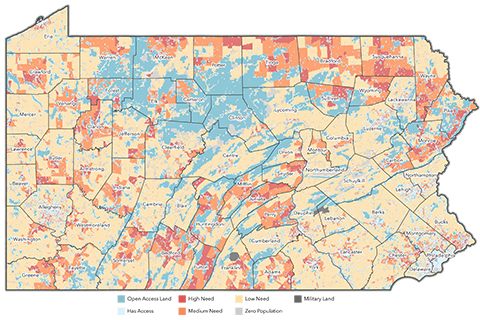
The first step to determine accessibility of outdoor recreation was to gather data on Pennsylvania’s parks, trails, water access points, and public open spaces.
In total, analysis included:
- More than 6,200 state and local parks
- More than 12,000 miles of trails
- 1,700 fishing and boating access points
- Nearly 5 million acres of public open space
After that, road networks were used to identify areas within a 10-minute walk and a 10-minute drive of each location. These areas were overlayed with U.S. Census data.
The result is detailed snapshots of who has access to outdoor recreation in Pennsylvania -- and who doesn’t.
Recreation Access Within a 10-Minute Walk from Home
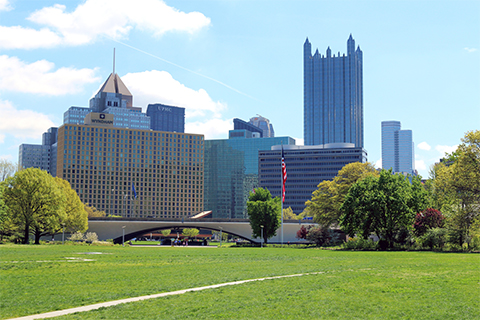
The analysis found that 53 percent of Pennsylvanians have outdoor recreation access within a 10-minute walk of their home. On average, urban areas had higher levels of access.
In Philadelphia, for example, 94 percent of residents live within a 10-minute walk of outdoor recreation.
By contrast, areas of highest need often occurred in suburbs. These areas have relatively high population densities, but they often have fewer, larger parks that require a car to access. Dauphin County’s Derry Township, for instance, has several excellent community parks.
Yet just 28 percent of township residents live within a 10-minute walk of them.
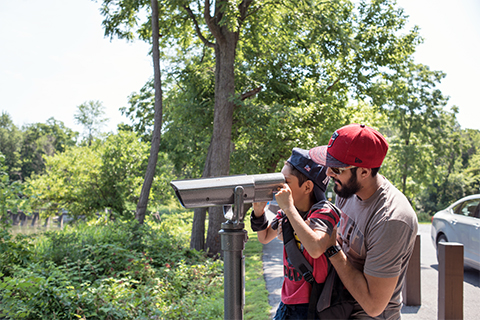
The data is presented on the online Outdoor Recreation Access in Pennsylvania maps that translate it to the county and municipal level.
On the maps, you can choose a county or municipality and see its access and need areas. Detailed statistics show who has access based on demographics like race, age, and income.
Nearby Opportunities are Just One Piece of the Puzzle
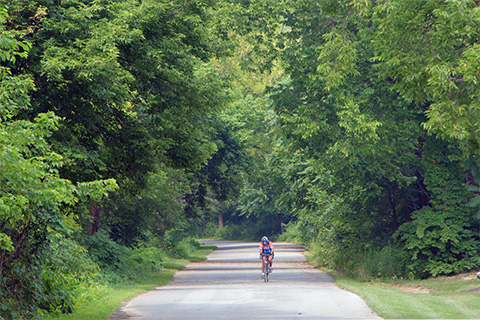
Facility presence is just one component of recreation for all. Size, quality, and maintenance also matter. A community may have access to a park, but that park may be overcrowded or poorly maintained.
For example, the analysis found that cities generally had greater park accessibility than suburbs. But that doesn’t mean cities should be ignored in park planning.
In fact, city parks may need even more investment, especially those serving primarily nonwhite and low-income populations.
A separate Trust for Public Land analysis (PDF) found that parks serving nonwhite populations are half the size of those that serve majority white populations. Parks serving majority low-income households are four times smaller on average than those that serve majority high-income households.
Toward a Goal of Recreation for All
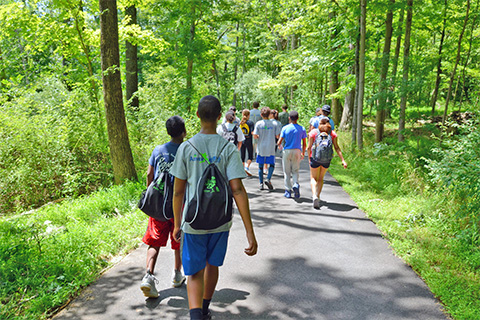
Pennsylvania has made incredible progress in making outdoor recreation more accessible. State funding sources like the Keystone and Environmental Stewardship funds supplement local efforts with grants for park acquisitions and improvements.
But the analysis reveals that we still have a long road ahead. Many suburban areas lack close access to parks. Many city parks are overcrowded and in need of maintenance.
As we look to a post-COVID future, there’s a need for more parks, trails, and public open spaces. And a need to care for the ones we already have.
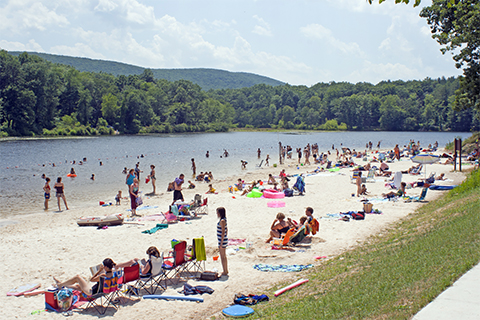
Pennsylvania’s five-year outdoor recreation plan -- Recreation for All -- helps to guide and prioritize planning and investments for local and state governments and other recreation providers.
Built with public input and research including the access data, the plan identifies areas of greatest need, sets priorities for state and federal grant funding, and delineates a course of action to achieve the goal of quality parks and trails within 10 minutes of all Pennsylvanians.